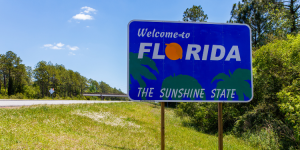Florida Education Report 2023: From #1 in Higher Ed to Overall Third Best in Nation
Overview of Florida’s Educational Standing 🌟
Florida’s education system is a tale of two halves.
The state is renowned for its top-notch higher education institutions but faces significant challenges in its pre-K through 12th-grade schools
. In nationwide education rankings, Florida secures an impressive third place overall.
This ranking reflects a blend of stellar achievements in higher education and the need for substantial improvements in early and secondary education.

Higher Education Dominance 🎓
Florida shines when it comes to higher education, claiming the number one spot in the nation.
The state is home to prominent universities such as the University of Florida and Florida State University, which attract students globally with their strong academic programs, research opportunities, and affordability.
Lower tuition costs and reduced student debt contribute significantly to the state’s top ranking.
These factors create a supportive and accessible environment for higher education students.
Challenges in Pre-K to 12th Grade 🏫
Despite its higher education prowess, Florida ranks 27th in pre-K through 12th-grade performance.
This disparity highlights some crucial issues.
One significant challenge is math performance, with 8th-grade students scoring an average of 279 on the NAEP assessment, below the national average of 283.
Additionally, the state’s high school graduation rate of 80.7% lags behind the national average of 84.1%.
These figures underscore the areas where Florida’s education system needs targeted improvements.
Comprehensive Evaluation Methodology 📊
The rankings by US News and World Report The conclusions are based on a comprehensive evaluation of numerous factors, including pre-K enrollment, academic scores, graduation rates, college readiness, tuition, and student debt. By these metrics,
Florida shows a mixed performance that propels its overall standing to third place while revealing specific areas needing attention.
The methodology provides a clear framework for understanding the strengths and weaknesses of the state’s educational landscape.
Florida’s position in the national rankings serves as both a benchmark of its strengths and a roadmap for addressing its challenges.
As the state continues to invest in education, balancing academic excellence with comprehensive safety measures and resource allocation will be essential for further advancement.
Pre-K to 12th Grade Performance Analysis 🔍
Florida’s pre-K through 12th-grade system displays a consistent presence with its substantial school districts, despite considerable challenges.
These challenges are visible in several performance metrics that place the state below the national average.
Math Scores and Graduation Rates 📚
One of the significant hurdles is in mathematics proficiency. In the 8th grade National Assessment of Educational Progress (NAEP), Florida’s students scored an average of 279, which falls short of the national average of 283.
This gap highlights a need for focused intervention in math education to bring students up to par with their peers nationwide.
Graduation rates present another area where Florida lags.
The state’s high school graduation rate is 80.7%, noticeably lower than the national average of 84.1%.
This disparity is concerning and suggests that while many students are progressing through the school system, a considerable number are not completing their education.
Addressing the factors contributing to this issue is critical for improving overall educational outcomes.
Challenges in Large School Districts 🏙️
Florida’s large school districts, such as those in Miami-Dade and Broward counties, serve vast and diverse populations, which poses unique administrative and educational challenges.
Managing these extensive districts efficiently while maintaining high educational standards and addressing the needs of every student requires extensive resources and innovative strategies.
Despite these challenges, there are notable successes within the system.
Florida’s supportive educational environments in schools like Coral Sunset Elementary highlight the positive impact that well-rounded curricula and dedicated educational resources can have on individual students and communities.
As we continue to examine Florida’s education system, it’s essential to explore potential strategies for improvement and future investments in infrastructure and resources.
This ensures that all students have the opportunity to succeed, preparing them for the rigorous demands of higher education and beyond.
Higher Education Excellence ✨
Leading State Universities 🏫
| University 🏫 | Location 📍 | Reputation 🌟 |
|---|---|---|
| University of Florida | Gainesville, FL | Top-ranked, highly regarded for academic rigor |
| Florida State University | Tallahassee, FL | Highly respected with vast resources and opportunities |
| University of Miami | Miami, FL | Prestigious private university with excellent student life |
| University of South Florida | Tampa, FL | Large public university with strong academic programs |
Affordability and Accessibility 💰
One of Florida’s standout features is its emphasis on affordability.
Unlike many states where sky-high tuition fees deter students, Florida offers lower tuition costs, significantly easing financial burdens on families.
Florida students also tend to carry less student debt upon graduation compared to the national average.
This financial relief provides graduates with a head start as they embark on their careers, free from the shackles of overwhelming debt.
Pioneering Research and Specialized Institutions 🔬
Florida excels in offering robust research opportunities, making it a hub for academic discovery and innovation.
Students, even at the undergraduate level, are encouraged to delve into research projects, fostering a rich environment of learning and exploration.
Iconic institutions like Embry-Riddle Aeronautical University further bolster Florida’s reputation, offering specialized programs that attract students from across the globe.
Their cutting-edge curriculum and globally-recognized faculty set a benchmark in fields such as aviation, making Florida a key player in shaping future industry leaders.
Florida’s strategic investment in higher education not only enhances its academic standing but also strengthens the state’s economy.
As we look to the future, Florida’s journey in balancing affordability with top-tier education continues to offer invaluable lessons to states across the country.
In the coming chapters, we will explore the personal journeys of students who have thrived within this nurturing academic ecosystem.
Student Success Stories 🎉
When it comes to student experiences, stories from Florida’s higher education system paint an inspiring picture of opportunity, support, and success.
These personal accounts demonstrate how Florida’s universities cultivate an environment where students can flourish academically and personally.
Supporting Student Success 🌱
Students at Florida’s top universities, such as the University of Florida and Florida State University, frequently mention the extensive support systems available to them.
Whether it’s academic advising, mental health resources, or peer mentoring programs, these institutions go to great lengths to ensure every student has the tools they need to succeed.
Marcelo Costa, a pre-med biology student originally from Brazil, shares his positive experience at the University of Florida.
He highlights the attentive professors and comprehensive resources that have been crucial to his academic achievements.
Costa states, “The faculty here is incredibly supportive. They make sure we leave each class with a thorough understanding of the material.
The university also provides excellent resources like workshops and libraries that cater to our various needs.”
Practical Training and Research Opportunities 🔧
One of Florida’s strongest assets in higher education is the abundance of practical training and research opportunities available to students.
Specialized institutions, such as Embry-Riddle Aeronautical University, offer niche programs that are highly regarded on a global scale, providing students with valuable hands-on experience.
For instance, many students participate in cutting-edge research projects alongside distinguished faculty members.
These experiences not only enrich their learning but also enhance their resumes and career prospects.
Research opportunities are not just limited to graduate students; undergraduates also have plentiful opportunities to engage in meaningful research activities.
Strong Faculty Engagement 👩🏫
A common thread in the success stories from Florida’s higher education institutions is the strong engagement of faculty members.
Professors are not only dedicated to teaching but also remain accessible and committed to mentoring students.
This engagement creates a nurturing learning environment where students can seek guidance and feedback, making a significant difference in their educational journeys.
Costa further notes, “The professors at the University of Florida are very hands-on.
They are always ready to help, whether it’s during office hours or through one-on-one meetings.
This personalized attention has been instrumental in my academic progress.”
Comprehensive Learning Resources 📚
Florida’s universities provide a wide array of learning resources designed to support student success.
From state-of-the-art labs and libraries to career services and extracurricular activities, these resources create a well-rounded educational experience.
Students have access to everything they need to strive for academic excellence while also preparing for their future careers.
Costa appreciates the emphasis on career readiness, saying, “The University of Florida offers mock interviews, resume-building workshops, and other career services.
These resources have been incredibly helpful in preparing me for life after graduation.”
These positive student experiences underscore the strengths of Florida’s higher education system, highlighting why it ranks #1 nationally.
As the state looks to the future, building upon these foundations will be essential to maintaining this level of excellence.
School Safety Initiatives 🔐
Enhanced Security Measures 🛡️
Florida has made substantial efforts to strengthen school safety following the tragic Parkland shooting at Marjory Stoneman Douglas High School in 2018.
Recognizing the urgent need for increased security, the state legislature enacted laws mandating that every pre-K through 12th-grade campus must have at least one armed officer.
This initiative ensures that schools are better prepared to respond to potential threats, creating a safer environment for students and staff.
District-Level Investments 💵
To comply with the new security requirements, school districts across Florida have made significant investments.
For instance, the Broward County school district, where Parkland is located, agreed to spend $3.4 million to employ armed officers on all its campuses.
This move exemplifies the state’s commitment to prioritizing student safety through substantial financial investments.
Dedicated School Police Departments 🚓
Some districts have gone a step further by establishing their own dedicated school police departments.
For example, Clay County has decided to create an independent police force to oversee more than one hundred campuses within the district.
This approach allows for a more focused and integrated security strategy, tailored specifically to the unique needs of each school community.
Broader Measures ⚖️
Aside from armed officers, the legislation also permits trained teachers and staff members to carry firearms.
This additional layer of security aims to provide a faster response during an emergency, which can greatly improve outcomes.
Controversial, this measure reflects Florida’s proactive stance on preventing future tragedies and ensuring comprehensive safety for all.
As we continue exploring the facets of Florida’s education system, the emphasis on safety highlights the state’s commitment to creating a secure learning environment.
This dedication complements other ongoing initiatives aimed at improving educational outcomes and student well-being.
Looking Ahead: Areas for Improvement 🚀
As we delve into the factors that could bolster Florida’s educational standing, it’s clear that significant attention is needed for the pre-K through 12th-grade system.
While strides are being made, a focused approach could result in significant enhancements in performance metrics and overall education quality.
Enhancing Pre-K through 12th-Grade Performance Metrics 📈
To address the gap in pre-K through 12th-grade performance, several strategies could be implemented.
Firstly, intensifying the focus on math education could help raise the state’s NAEP math scores, which currently lag at 279 compared to the national average of 283.
Enhancing teacher training and integrating more interactive and practical math applications in the curriculum might stimulate student interest and understanding.
Another critical area is improving graduation rates. With Florida’s high school graduation rate standing at 80.7%, behind the national average of 84.1%, programs aimed at student engagement and retention could make a notable difference.
Mentorship programs, increased counseling services, and after-school support can offer students the help they need to stay on track and graduate on time.
Continuing Investment in Educational Infrastructure and Resources 🏗️
To achieve a robust educational system, continuous investment in infrastructure and resources is imperative. Modernizing school facilities and providing up-to-date technological tools can create a conducive learning environment.
Investing in digital learning platforms and resources not only aids in daily teaching but also ensures preparedness for any remote learning contingencies.
Moreover, diversifying the resources available to students, such as expanding access to libraries, science labs, and extracurricular programs, will support a holistic educational experience.
By ensuring that resources are distributed evenly, we can make certain that everyone has access to what they need, urban and rural areas alike.
Florida can guarantee all students have the necessary tools for success.
Balancing Academic Excellence with Comprehensive Safety Measures ⚖️
In the wake of recent concerns over school safety, it remains essential to balance these measures with educational goals.
The implementation of mandatory armed officers on all campuses and district-level investments in school police departments are excellent steps toward ensuring student and staff safety.
However, these measures must be complemented by initiatives that promote a secure and supportive environment.
Training programs for staff and students on emergency preparedness, coupled with mental health support systems, can further enhance the feeling of security within schools.
Ensuring that safety measures do not create an oppressive atmosphere but rather a reassuring one will be crucial for maintaining a healthy educational environment.
By focusing on these areas, Florida can make significant strides in elevating its pre-K through 12th-grade education system, paving the way for enhanced academic achievements and well-rounded student development.
This proactive approach promises a brighter future for the state’s educational landscape.







